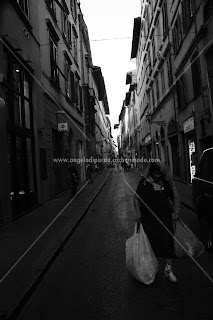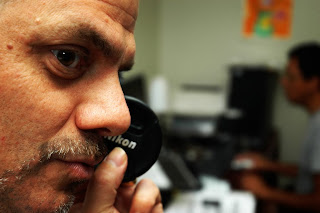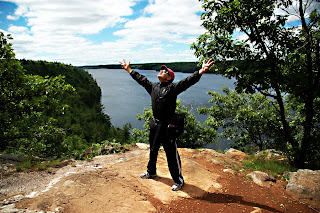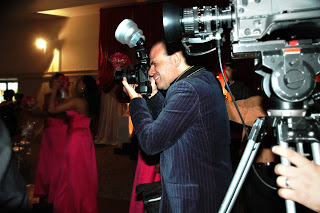Source:
Famous Photographers and Their Impacts on Photography
Throughout the years there have been a handful of photographers who have molded the ways in which the medium of photography has become an art. Each photographer left his imprint on photography, forever changing the ways in which people study, practice, enjoy and embrace the field.
From the early photographers, who established the initial path that photography would follow, to the photographers of today, who are continually pushing the bounds of photography with digital cameras and image editing software, hundreds of photographers have snapped millions of photos, allowing us to see everyday objects in extraordinary ways and extraordinary objects in average ways.
Many interesting, intriguing and sometimes-unusual people have had a huge impact on the art of photography. In this section, we'll examine the great photographers of yesterday, today and tomorrow. We'll discuss their techniques, styles, histories and more. Keep reading to learn more about famous photographers.
Famous Photographers: 1801 to 1900
In the early days of photography, there were a few photographers who stood out from the pack, including Andre Giroux, E.J. Bellocq and Man Ray. Each photographer had a distinct style that made a lasting impression on the world of photography.
Keep reading to learn about the following famous photographers:
* Man Ray
* Andre Giroux
* E.J. Bellocq
Famous Photographers: 1901 to 1950
From 1901 to 1950, photography evolved from an art in its infancy to a complex and constantly evolving medium. Photographers in this time period experimented with light and shadow, color and new forms of photography equipment.
Keep reading to learn about the styles, histories and techniques of the following famous photographers:
* Robert Mapplethorpe
* Jean Baudrillard
* Yutaka Takanashi
* William Wegman
* William Eggleston
* Walter Iooss
* Victor Hasselblad
* Linda McCartney
* Larry Clark
* Karl Lagerfeld
* John Baldessari
* Andy Warhol
* Annie Leibovitz
* David Hockney
* Diane Arbus
* Edgar de Evia
* Hans Bellmer
* Helmut Newton
* Henri Cartier-Bresson
Famous Photographers: 1950 to Present
During this time period, photography has changed drastically and quickly. Today, photographers continue to push the limits of photography, experimenting with the newest equipment, including digital cameras and digital image editing software. They also continue to push the bounds of film-based photography, often taking photographs to initiate political or social change.
Read on to learn how the following famous photographers impacted the art of photography:
* Uta Barth
* Sophie Calle
* Sally Mann
* Nan Goldin
* Andreas Gursky
* Anton Corbijn
* Cindy Sherman
* David LaChapelle
* Herb Ritts
Tuesday, August 17, 2010
Wednesday, July 21, 2010
Digital Watermarks

What is a digital watermark?
Source: HUBPAGES
Thanks to the Internet, anybody can share photos at the speed of light. However, this does not always mean you want people sharing your pictures. Just head to Google or any search web site, and you can find personal photos of just about anybody. Most people do not even realize that web sites like Photobucket and Webshots allow search engines to spider images made for public viewing. This can create a problem where somebody begins sharing personal photos of you on a vacation or at work or just having a good time when you really do not want them to. Using digital watermarks, you can safeguard your images from being used by other people and make it hard for them to pass photos you took off as their own.
Digital watermarking allows a person to hide copyrights on audio, video or images. This information usually includes the maker, the copyright itself and any other data the owner wants to include. Watermarking began as a way to keep money from being copyrighted and developed into ways on the world wide web to keep documents and other items safe from being reproduced or shared without credit.
The Internet is now rampant with illegal file sharing on all levels. While the original copyright holders are trying to track down and keep their work within the circle they want, it is impossible with the speed of the world wide web to keep track of everything on it. Digital watermarking is one such way to keep track of their work and make sure they are getting their dues for creating, distributing and selling it.
What types of watermarks are there?
The most common type of digital watermark is the seal. Any Internet users has seen it. It's a seal, usually the name of the copyright holder, placed over the most interesting aspect of the photo. It is placed in such a manner so that people viewing cannot distribute without it being shown and it cannot be edited out easily. There are two types of digital watermarks: Visible and invisible. Visible takes the form of a translucent overlaid, such as described above, whereas invisible is hidden within the coding of the object itself.
Stock photography, from places such as Getty Images, use visible watermarks on their photos. These are images placed on top of the primary image. In this case, Getty Images types out their name in such a fashion that it ruins the overall beauty of the photo unless you purchase it without the digital watermark in place. Since Getty Images loses money each time the photo is shared, placing the watermark is supposed to cut down on sharing of the image without them being paid a royalty.
In other uses, photographers may use a byline watermark to denote that they took the photo. They are generally sharing their images, and they want to be doing this, so this watermark is along the top, bottom or sides of the image in a smaller print that does not take away from the beauty of the shot. Since the primary purpose of this type of watermark is simply to claim ownership, it works well for sharing photos on the Internet in that capacity, but it does not provide for protection from people mutilating the work or editing out the watermark to claim as their own.
Invisible watermarks, on the other hand, do not show themselves on the image, audio, video or other type of file. They are coded within the signal of the file itself, and they are used to track down the file to the original copyrighted owner. Many programs that open a file that has an invisible watermark will note this. Such programs as Adobe Reader and Microsoft Word are examples of this type of notice being displayed upon opening an invisible watermarked-file.
Digital fingerprinting is a new technology designed to "fingerprint," so to speak, the file with the purchaser's information. If multiple copies are made and distribute, this fingerprint will be in the file and can be traced back to the purchaser. They can be either invisible or visible and are being used by many stock-based photography companies to keep track of where their photos go after being purchased.
Thursday, July 15, 2010
Wednesday, July 7, 2010
PHOTOGRAPHY MY LIFE

If anyone has ever wished for a dream job, what would it be?
It's pretty weird in thinking that I've been doing this for over 25 years. I don't feel old or wasted, even if the darkroom chemicals have not gotten over me as yet.
But today the darkroom is no longer being used, so I only think. But when we think of prestige work, names such as Robert Doisneau, Robert Capa, Man Ray, Ansel Adams and many others pop into my mind. Never will these fine photographers ever be replaced. The only one thing I tell people is, Keeping It Real. The first thing models ask me when I do a shoot, is words like " Do you do retouches " the shoot had not even taken place yet. In a world of cost cutting measures, and with the corporations that have taken over, It's like Karl Lagerfeld had recently mentioned. The world needs more artists, because everything has gone dry.
Tuesday, July 6, 2010
PHOTO EXPLORATION BON ECHO

For certain it was one of the greatest destinations in which we seldom talk about. I may have crossed millions of time on a road going east of hwy 401. This excursion is about 3 hours from Toronto.
Bon Echo was a treasure to photograph with so much history, I spent several days on a family camp ground.
Really it felt like the middle of no where. If you ever heard of a small town, with a population in which is ever so friendly this is the place. So I continue to scout for destinations, this is a great place for News & Trends In Photography. I’m proud to announce that Cloyne, Ontario has been added in our group. If you enjoy nature this destination is unrestricted. With so many beautiful lakes. I highly recommend that your photo gear is secured. The wildlife may get to it.
Sunday, July 4, 2010
NEWS & TRENDS

NEWS & TRENDS
The photo world is rapidly moving, and in my career I have had worked and met very interesting people. News & Trends will be a learning tool. Hands on for sure. Photography is not just about taking pictures. Every function I have attended professionally and personally, people have often asked about photo techniques. This is what I have learned "There are no rules for good photographs, there are only good photographs." - Ansel Adams.
At one of my latest seminars this is what George Hunter had said to me
"Cameras are not made to be worshipped, they are only tools"
Subscribe to:
Posts (Atom)


